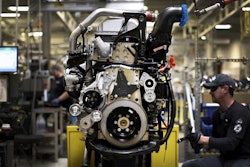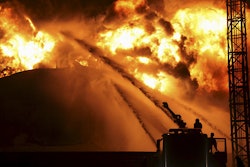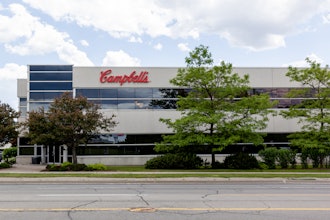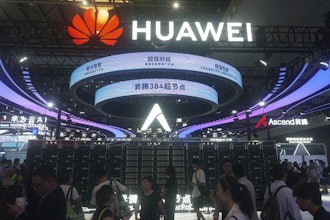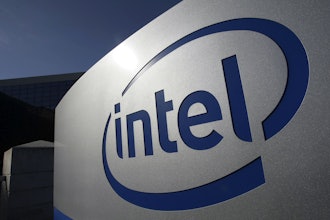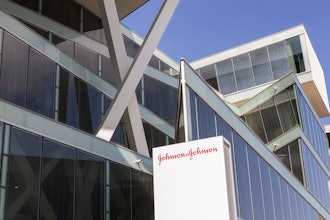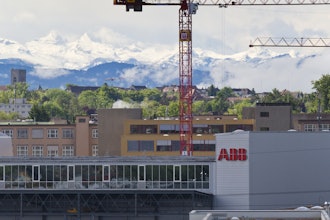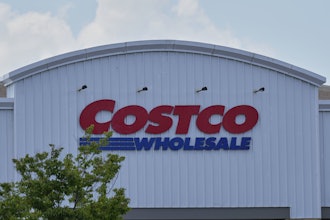
Borderless manufacturing:
Achieving growth through globalization
2Today’s manufacturers face a wider range of challenges than ever before—most notably, greater, more varied competition and the
complexities of a globally extended supply chain. At the same time, the opportunities for success have never been more far-reaching.
There are over 7.2 billion people on the Earth. And because geographical borders seldom act as a boundary to sales, nearly everyone
has the potential to become a customer.
Just consider the changes happening around the globe and the effect they’re having on how goods are produced, distributed, and sold.
Global supply chains allow manufacturers
to reach potential customers worldwide
Industrialized Western European nations capitalize on core
manufacturing strengths to maintain dominance in critical
vertical markets, like luxury automobiles.
Booming growth among several South American countries
sparks innovation as manufacturers develop new products
to create differentiation and carve out market niches.
Volatility in the Middle East and the growth of the middle
class in Africa fuel fast-paced change and uncertainty,
reshaping challenges and opportunities as a result.
The Asia-Pacific region adds uncertainty to the global picture
as social reform and public pressure begin to undo the long
tradition of low-cost labor.
Companies in the Western world engineer extended supply
chains in order to effectively market their goods in European
and Asian markets.
1.8 Billion of the total 7.2 Billion world population falls within middle
class status today. The number is projected to reach 4.8 Billion by 2050
with the fastest growth coming between 2014 and 2020.1
Borderless manufacturing:
Achieving growth through globalization
3Nothing stays the same—
manufacturers must stay up to date
It’s hard to keep pace with changing best practices and strategies
for competing in a global economy.
Staying current with rapidly evolving technology trends isn’t easy.
But, it is essential if manufacturers are to succeed in today’s global
market. In this eBook, we will examine the factors shaping the
current manufacturing environment as they relate to:
• Competing in a global marketplace
• Defining the new global value chain
• Seizing opportunities for growth
• Meeting global demand with limited resources
Then, we’ll take a look at how technology can help companies
improve their operations and drive success on a global scale.
According to Euler Hermes Economic outlook:
• Regions like ASEAN-China, Africa, and Eastern Europe
have seen their trade volumes more than quadruple in the
last decade.
• Intra-zone trade between nations in proximity has
increased, with one country providing the center of gravity,
such as the case of China and Thailand, or Russia and the
Czech Republic.
• East Asia is expected to continue to dominate in import
growth over the next three years with Thailand leading the
world with 14% growth.
• Chinese growth in imports is expected to reach nearly
10.5%, driven by population growth, infrastructural
development, positive wealth effects, and urbanization,
and new demand.2
Borderless manufacturing:
Achieving growth through globalization
81%
TECHNOLOGICAL
ADVANCES
60%
SHIFTS IN
ECONOMIC
POWER
Industrial manufacturing CEOs believe:
will transform their businesses in the next five years
4The only market is global
Competition is increasing in all segments of manufacturing.
In all parts of the world.
What’s behind the increased competition among today’s manufacturers? As the chart below illustrates, Gross Domestic Product (GDP)
is on the upswing in many countries, which means more players are seriously competing for consumer dollars.
Real GDP growth
2013 2014p
Global (market exchange rates) 2.5 2.8
Global (PPP rates) 3.0 3.3
China 7.6 7.4
Australia 2.4 3.3
Ireland 0.2 3.1
Poland 1.6 3.1
United Kingdom 1.7 3.0
Turkey 4.0 2.6
United States 2.2 2.1
Germany 0.5 2.0
Japan 1.5 1.5
Spain -1.2 1.1
Industrialized nations, developing countries, and Western and Eastern blocks are
courting potential customers with promises of innovative products, competitive prices,
rich e-commerce experiences, free shipping, and custom configurations. It’s truly
a buyer’s market.
And as a result, manufacturers must now compete against not only established brand
names, but also with the startups that operate out of a garage with a few thousand
dollars in venture capital funding.
Twenty-one nations more than doubled their GDPs in the first decade of the 21st century.
All of these countries are located in developing markets.3
Borderless manufacturing:
Achieving growth through globalization
21 nations doubled GDP
5Competing in a global marketplace
So, how do today’s manufacturers tackle this broad challenge?
There are a couple of key strategies organizations can employ
to more effectively compete in multiple geographies.
Minimizing costs through outsourcing
Outsourcing has long been one of the tactics used by Western
manufacturers to keep product prices low. Contracts for assembly
and repetitive tasks are often sent to divisions or partners in countries
with historically low wages, particularly Mexico and China.
Using right-shoring for additional savings
Labor reform and public outcry about unsafe working conditions have
led to increased wages in China. With socially conscious consumers
threatening boycotts and staging grassroots protests of companies
that outsource labor to countries with poor working conditions,
sending contracts to overseas partners may not be as attractive as it
once was. As a result, manufacturers are being forced to re-examine
their outsourcing strategies and embrace reshoring or right-shoring
programs. Many organizations have found that moving assembly and
distribution hubs closer to the consumer can provide greater savings
than choosing locations based on the price of labor alone.
When working to compete globally, the location of the manufacturing
plant, sub-contractors, and distribution centers is now a critically
important consideration—it directly impacts the price and speed
of delivery to customers. Proximity to the consumer is now a vital
ingredient of competitive differentiation.
37% of manufacturers with annual
sales above $1 billion, and 48% with
sales in excess of $10 billion, said they
were planning or actively considering
shifting production facilities from China
to America.4
Borderless manufacturing:
Achieving growth through globalization
Plant location impacts speed of delivery, labor costs,
logistics complexity, and customer satisfaction
6The Internet has brought the world as close as a mouse
click. Online shopping and overnight shipping have
changed the consumer marketplace and made it possible
to easily market goods and services to a worldwide
population. But, they’ve also served to significantly
complicate the manufacturing process:
Orchestrating a global value chain—from obtaining
raw materials and manufacturing components to
assembling, packaging, and delivering goods—is
a critical part of any modern manufacturing strategy.
This is far different from the golden age of
manufacturing, when most operations took
place within a single region.
Supplier networks touch multiple points on the globeDistribute finished goods by rail, truck, or ship
Land, space, and equipment are acquired by lease,
with distribution hubs placed near concentrations
of customers
Then: Now:
Purchase a large tract of land
Factories are specialized, with each plant managing
a specific product or production task
Build a factory
Workers are often hired on a contract basis, while many
skilled roles, such engineering, are outsourced
Hire full-time local employees
Supplier contracts are significantly limited—some
are as short as six months—due volatility in the price
of raw materials
Sign long-term agreements with regional suppliers
and Partner with nearby contractors
Defining the new global value chain
Borderless manufacturing:
Achieving growth through globalization
7Seizing opportunities for growth
The global population is expanding—but it is also becoming more
accessible. Countries that may have once been labelled remote
and impossible to reach are now crisscrossed with highways,
delivery systems, communication networks, and—of course—
the Internet.
In addition to being more accessible, the world population is
also exhibiting greater purchasing power. The middle class is
expanding in many countries, including nations that were once
totally impoverished.
More individuals in the middle class means more people armed
with mobile devices. And anyone who owns a smartphone can
become a major influencer on innovation, product strategies,
or purchase decisions.
The rise of the middle class in new areas promises to present
manufacturers with a significant number of potential customers.
The challenge, of course, is establishing a distribution channel
and supply chain that can deliver the goods to remote regions
where the transportation infrastructure may be lacking.
Between 1980 and 2010, Africa’s middle class
almost tripled in size—from 115 million to 327
million, or about a third of the continent’s
population.5
Borderless manufacturing:
Achieving growth through globalization
8Meeting global demand with limited resources
Even as their operations become markedly more complicated,
manufacturers are continually trying to do more with less,
to stretch resources as far as possible before they snap.
Fortunately, modern IT solutions can help manufacturers
manage global operations with greater ease, confidence,
and profitability.
But successfully managing a worldwide supply chain made
up of multiple contractors, suppliers, and distribution centers
requires the right ERP solution.
It demands a solution with complete, end-to-end visibility
into everything from financials and scheduling to shop floor
management, quality control, and analytics—so all aspects
of the operation are transparent to key stakeholders.
Moreover, the solution must be offered in a cloud consumption
model. The ability to deliver the ERP functions organizations
demand, without forcing them to invest precious resources
in dedicated hardware and software, makes the cloud a key
contributor to agile, responsive operations.
Borderless manufacturing:
Achieving growth through globalization
“ Complete end-to-end visibility is
essential—even when the supply
chain stretches across continents
and oceans.”
It’s abundantly clear that manufacturers must compete in a globalized marketplace,
orchestrate geographically dispersed supply chains, and identify and capitalize on
new opportunities for growth.
Modern, advanced ERP solutions are designed with globalization in mind.
Today’s highly flexible solutions offer the deep functionality manufacturers need,
along with the analytics, reporting, and end-to-end visibility required to manage
a global enterprise. And, multi-site capabilities allow companies to support
localization, while still maintaining an integrated global network.
But what happens if an organization attempts to manage a global expansion
without the appropriate IT infrastructure in place?
9
What it all means
Borderless manufacturing:
Achieving growth through globalization
• Disparate systems and siloes of
information can leave plants without
access to corporate insights
and strategies
• Poor visibility into a global operation,
especially the supply chain, can
cause confusion about inventory,
costs, and bottom-line profitability
• No real-time insights into operational
status can create workflow
disruptions and lead to missed
deadlines and unsatisfied customers
• A lack of consistency and quality-
control standards from location
to location can jeopardize
brand integrity
• An inability to quickly establish
operations in a developing country
poised for explosive growth can
hinder competitive advantage
• Implementing a technology platform
that is unable to respond to rapidly
changing operational demands can
slow agility and overtax already
scarce resources
Many of these issues can be avoided
with the help of technology.
Simply put: The right technology
can make all the difference. So what
qualities should manufacturers look
for in an ERP solution?
Risks
A highly flexible IT infrastructure
is an essential component of any
contemporary manufacturing operation.
And a modern ERP solution serves
as the cornerstone by allowing an
organization to manage the unique
issues of its vertical industry, as well
as both local and global business and
financial concerns.
Manufacturers need ERP solutions that
are purpose-built to meet their specific
operational demands—and well-suited
to manage the shifting challenges of
globalization.
The table to the right details common
challenges global manufacturers
encounter and the ways the right ERP
system can help to mitigate them.
Challenge How technology helps
Availability of raw materials
Maintaining the proper inventory of raw materials
continues to be a critical challenge for manufacturers,
particularly in industries using materials that are scarce,
restricted, or require specialized shipment or handling,
such as anything perishable or hazardous.
Inventory management
Warehouse management, procurement, and supply-
chain tools integrate to create a single global view
of current inventory availability and future needs.
Visibility across the supply chain can mitigate the risk
of unexpected interruptions to availability, ensuring
the right products are in the right place at the right
time. Collaborative tools, online portals, and advanced
analytics make it easier to monitor and maintain
appropriate levels of inventory.
Regulatory compliance
No matter where a plant is located, local and
international regulations are always going to be a
core consideration. Tracking, reporting, and managing
compliance programs can be complex and time
consuming. But the fines for violations for a misstep can
be costly.
Escalation alerts
Modern ERP solutions contain integrated quality-control
systems and use escalation alerts to help improve
compliance with strict standards and performance
requirements. Reporting tools can make it easier to
monitor compliance, while automatic alerts and triggers
can provide fair warning of any non-compliance events.
Global or local
Nationalism or cultural preferences can push customers
to seek a local flavor of the global product. Made to
order, engineered to order, and configured versions of
products may be expected in some regions where a
distinct style is preferred. Likewise, labels, packaging,
and consumer directions and warnings may have to
change to reflect different languages or regional laws.
Flexibility
Today’s ERP solutions and product configuration tools
help manufacturers meet customer expectations
for product specialization. These solutions can
manage small runs, short product cycles, and mass
customization, as well as traditional make-to-stock
production orders. In addition, advanced warehouse
solutions enable manufacturers to manage multiple
SKUs of packaging, labels, and pick-and-pack rules.
10
How technology helps
Borderless manufacturing:
Achieving growth through globalization
Challenge How technology helps
Multiple languages, currencies, and tax laws
Manufacturers in today’s global marketplace must be
flexible enough to operate in numerous languages, do
business in multiple currencies, and uphold the unique
tax laws of several different countries.
Multi-location support
It is absolutely essential for an ERP solution to include
the capability to manage multiple sites, languages, and
currencies. And, the solution must also be supported
by a provider with global expertise and customers in
the target market, so manufacturers can benefit from
the provider’s experience and proven success.
Quality control and consistency
Consistency and quality control become even more
important as manufacturers extend their operations to
several locations. Customers expect the same level of
performance, no matter where the product is made.
Variations can put the integrity of the brand at risk.
Product specifications
Contemporary ERP solutions have closed-loop quality-
control systems that can measure final performance
against engineered parameters. They also feature
built-in checks and balances that can better manage
consistency throughout the manufacturing process.
Risk
Global operations naturally involve some degree of risk,
as plants move into regions where social and political
volatility can threaten stability, security, or the continuity
of the supply chain. As a result, manufacturers must
be able to react quickly to new security concerns or
threats to employees and executives in unstable areas.
Agility of cloud solutions
ERP solutions that feature cloud deployment options
give manufacturers the ultimate in flexibility and agility.
Because there is no need for hardware, servers,
systems to manage security, or extensive IT support,
setting up in a new location—or relocating when
there is a risk—can happen quickly and easily. This
provides the flexibility to move nearer to consumers
or relocate as needed to take advantage of changing
opportunities or avoid hazardous conditions.
11
When all of these capabilities
are delivered in a single
solution, manufacturers will
find it much easier to enter
new markets with confidence.
And succeed in them.
Cloud-based applications
represent 22% of all
manufacturing and
distribution software
installed today, and are
projected grow to 45%
in the next ten years.
How technology helps (continued)
Borderless manufacturing:
Achieving growth through globalization
!
About Infor
Infor is fundamentally changing the way information is published and consumed in the enterprise,helping
73,000 customers in more than 200 countries and territories improve operations, drive growth, and
quickly adapt to changes in business demands. To learn more about Infor, please visit www.infor.com.
References
1Kharas, Homi. OECD Development Center. Working Paper No. 285. The Emerging Middle Class in Developing Countries. Global
Development Outlook.
2Euler Hermes Economic Research Department. No. 1187. The Reindustrialization of the United States. Economic Outlook.
3Deloitte University Press. “Business Trends 2014: Navigating the Next Wave of Globalization.” 2014.
4The Economist. “Reshoring Manufacturing: Coming Home.” January 19, 2013.
5The Globalist. “9 Facts: Africa’s Middle Class”. August 6, 2014
Disclaimer
This document reflects the direction Infor may take with regard to the specific product(s) described in this document, all of which is subject
to change by Infor in its sole discretion, with or without notice to you. This document in not a commitment to you in any way and you
should not rely on this document or any of its content in making any decision. Infor is not committing to develop or deliver any specified
enhancement, upgrade, product, or functionality, even if such is described in this document.
Copyright © 2014 Infor. All rights reserved. The work and design marks set forth herein are trademarks and/or registered trademarks
of Infor and/or related affiliates and subsidiaries. All other trademarks listed herein are the property of their respective owners.
#INFDTP1452296-en-US-1114-1




